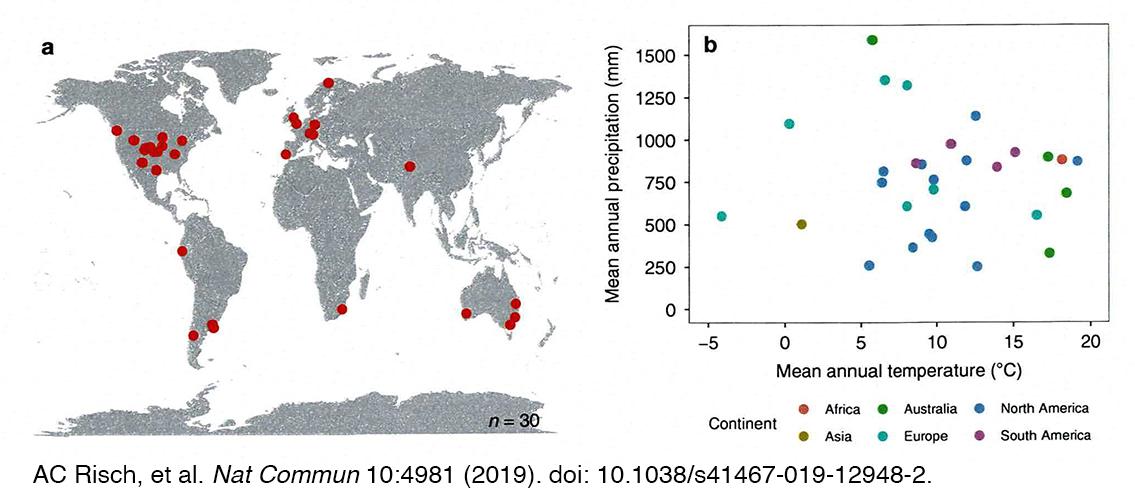
The Nutrient Network (https://nutnet.org/), aka NutNet, is a global collaborative research group studying two of the most important effects of humans on grassland ecosystems: alteration of herbivore (i.e., grazing animal) density and increased supply of nutrients such as nitrogen and phosphorus. To quantify these effects, NutNet scientists are conducting the largest globally-replicated ecological experiment, which is occurring at over 120 sites in 25 countries. NutNet is coordinated by MSI PIs Professor Eric Seabloom and Professor Elizabeth Borer, both of the Department of Ecology, Evolution and Behavior in the College of Biological Sciences (CBS).
In a recent paper published in the journal Nature Communications, the NutNet team used data collected from 30 of their experimental sites around the globe to study soil nitrogen mineralization (Nmin). Nitrogen is a key limiting nutrient in many ecosystems, and Nmin is a critical process that determines the rate at which nitrogen is made available to plants. For this reason, Nmin rates can also determine the ability of plants to capture and sequester excess carbon arising from fossil-fuel combustion. Laboratory-based estimates of the Nmin rates are easier to conduct than field-based measures, but how well measurements in the lab correlate with actual field conditions is uncertain. The NutNet team determined that these laboratory results were not strongly correlated with field measurements, but they could make more accurate predictions when combined with soil and climatic data. These results will help predict global nitrogen cycling rates, a critical component of the global carbon cycle. The paper can be found on the journal website: A.C. Risch, S. Zimmermann, R. Ochoa-Hueso, M. Schutz, B. Frey, J.L. Firn, P.A. Fay, F. Hagedorn, E.T. Borer, E.W. Seabloom, W.S. Harpole, J.M.H. Knops, et al. “Soil net nitrogen mineralization across global grasslands.” Nature Communications 10:4981 (2019). doi: 10.1038/s41467-019-12948-2. (link: ) This paper was one of Nature Communications’ top papers for 2019.
MSI supports NutNet by helping manage and maintain plant, soil, climate, and genomics data collected in the globally distributed NutNet experiment.
Image description: Geographic and climatic distribution of experimental sites. a. Location of the 30 NutNet sites where the field experiment was conducted and soil samples were collected for laboratory analyses. b. The 30 study sites represent a wide range of mean annual temperature (MAT) and mean annual precipitation (MAP). The sites also cover a wide range of soil edaphic conditions. Image and description adapted from A.C.Risch et al., Nat. Commun. 10:4981 (2019). doi: 10.1038/s41467-019-12948-2.
posted on March 27, 2020